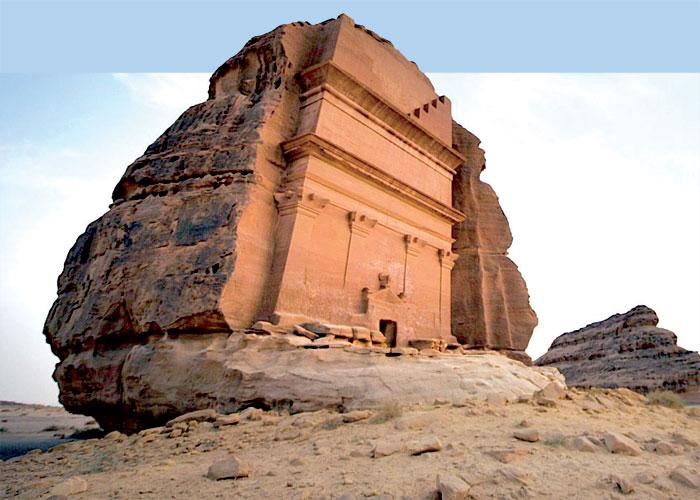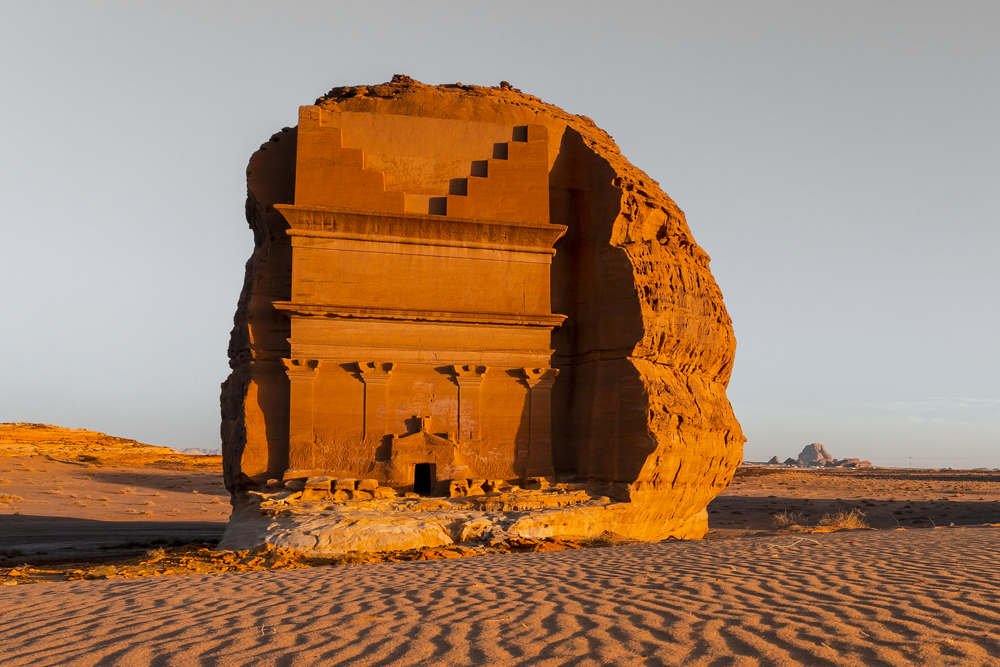Qaṣr Al-Farīd, meaning ‘the Lonely Castle,’ stands as a captivating testament to the rich history of the Nabataean Kingdom in the 1st century. Situated within the archaeological site of Hegra, in present-day Saudi Arabia, it is the largest rock-cut tomb in the area and a remarkable example of ancient architecture and craftsmanship.

Carved into the sandstone cliffs, Qaṣr Al-Farīd showcases the ingenuity and skill of the Nabataean people. The tomb’s facade features intricate details, including decorative motifs and inscriptions, reflecting the cultural and artistic influences of the time. Its grandeur and impressive scale make it a significant landmark within the site.

The purpose and significance of Qaṣr Al-Farīd remain shrouded in mystery. Some scholars believe it was intended as a final resting place for a prominent Nabataean figure, while others propose that it may have served as a memorial or a ceremonial space. Its isolated location and the name ‘the Lonely Castle’ hint at its enigmatic nature and the solitude that surrounds it.

The Nabataean Kingdom, known for its prosperous trade routes and architectural marvels, including the famous city of Petra, left a lasting legacy in the region. Hegra, a UNESCO World Heritage site, preserves the remnants of this ancient civilization and provides valuable insights into the Nabataean culture and way of life.

Qaṣr Al-Farīd stands as a testament to the architectural prowess and artistic achievements of the Nabataean people. Its imposing presence and intricate carvings serve as a window into the past, allowing us to imagine the grandeur and significance it held in the 1st century.
Today, visitors to Hegra can marvel at the magnificence of Qaṣr Al-Farīd and explore the rich history and cultural heritage of the Nabataean Kingdom. This awe-inspiring structure serves as a reminder of the enduring legacy of ancient civilizations and their contributions to the world of art, architecture, and human history.
